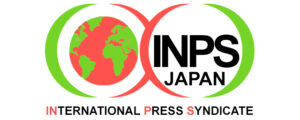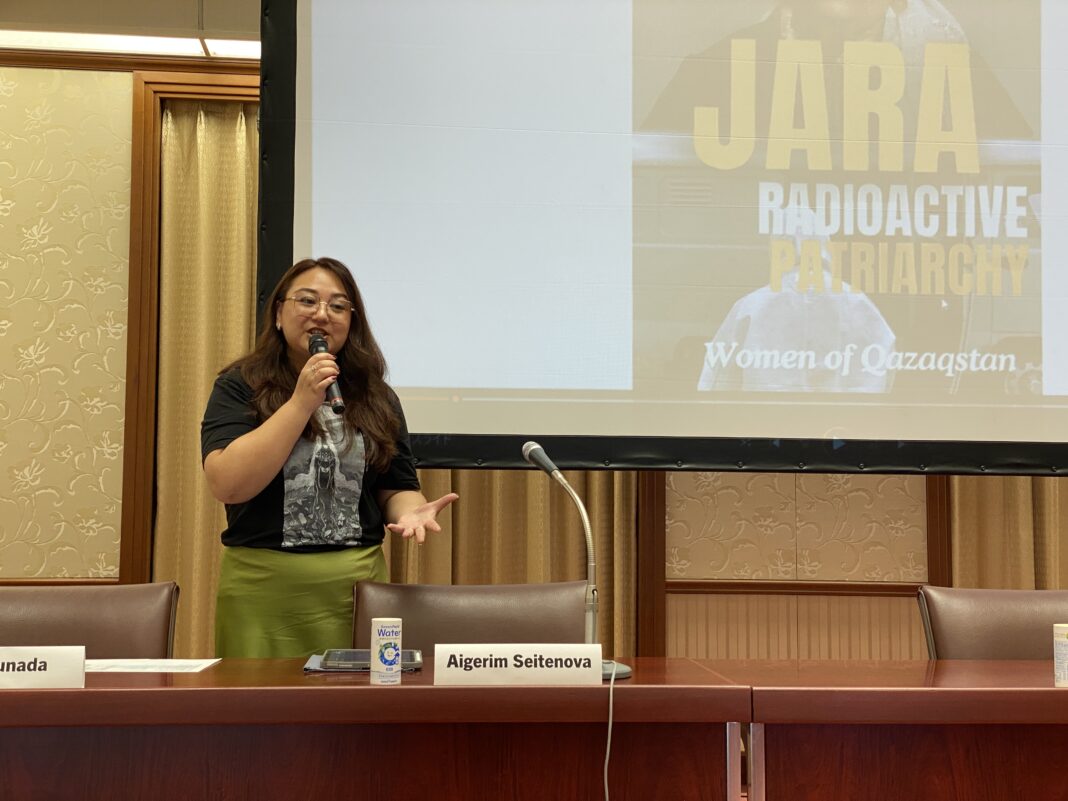By Katsuhiro Asagiri
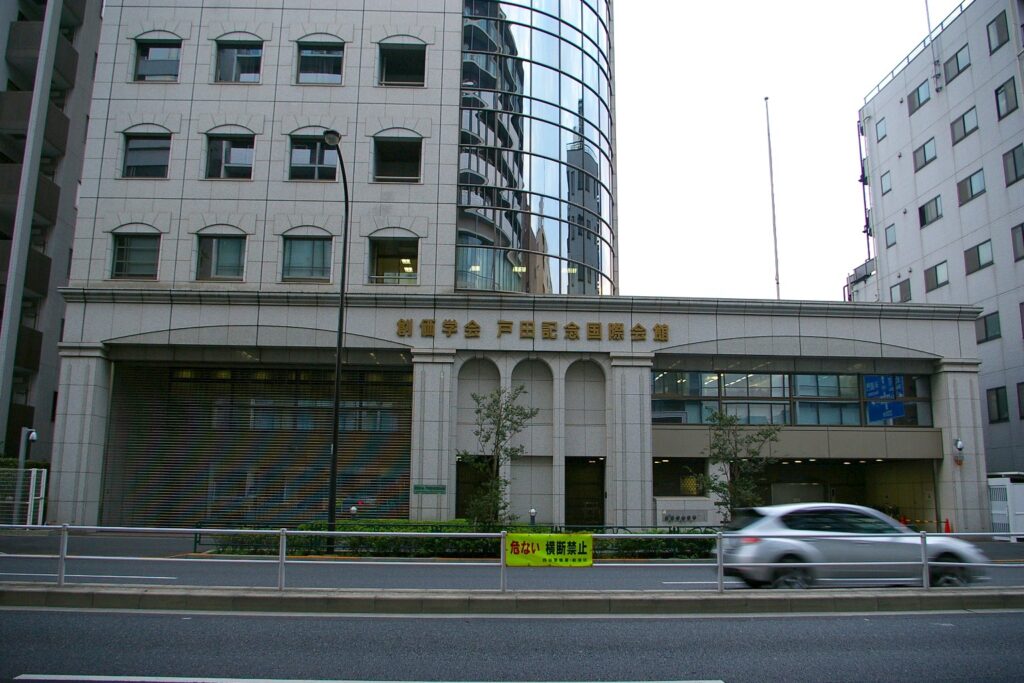
TOKYO (INPS Japan) – The screening room at the Toda Peace Memorial Hall in Tokyo fell silent as Kazakh filmmaker and human rights advocate Aigerim Seitenova stepped forward in a black T-shirt and green skirt to introduce her 31-minute documentary, “Jara – Radioactive Patriarchy: Women of Qazaqstan.”
The hall itself is symbolic in Japan’s peace movement. It is named after Josei Toda, the second president of the Buddhist organisation Soka Gakkai, who in 1957 made his historic Declaration Calling for the Abolition of Nuclear Weapons before 50,000 youth members. That appeal has become a moral pillar of Soka Gakkai’s global campaign for peace and disarmament.
Reclaiming Women’s Voices

“This film was made to make visible the voices of women who have lived in silence. They are not victims—they are storytellers and changemakers,” Seitenova told the audience of diplomats, journalists, students and peace activists.
Her documentary, Jara—meaning “wound” in Kazakh—tells the stories of women from Semey, formerly known as Semipalatinsk, the site of 456 Soviet nuclear tests conducted between 1949 and 1989.
Unlike earlier films that focused on physical devastation and disability caused by nuclear testing, Jara explores the unseen and intergenerational impacts: the stigma, the psychological scars, and the inherited fear of bearing children.
“Most films show Semey as ‘the most nuked place on Earth.’ I wanted to show resilience instead of fear—to reclaim our story in our own voice,” she said.
Breaking the Silence
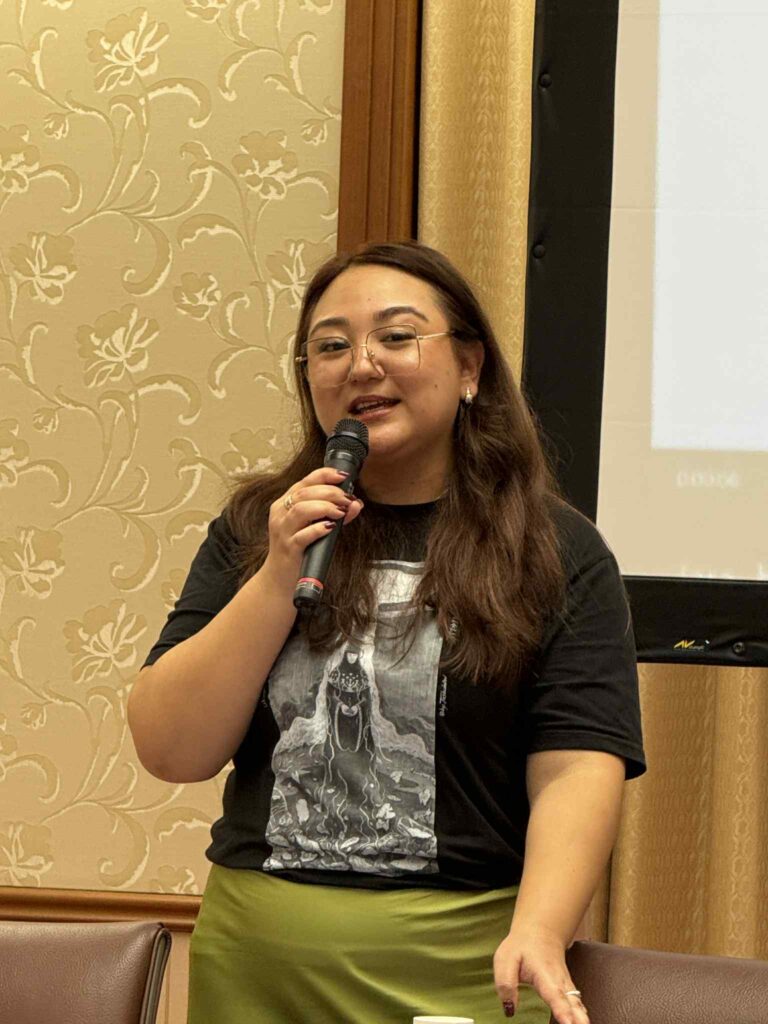
Seitenova’s personal connection to the issue began with humiliation.
As a university student in Almaty, the largest city in Kazakhstan, when she introduced herself as being from Semey, a classmate mockingly asked if she had “a tail.”
“That moment stayed with me,” she recalled. “It made me realise that nuclear harm is not only physical. It lives on in prejudice and silence.”
That experience would later drive her to create a film that breaks that silence.
Patriarchy and Nuclear Power
In Jara, women appear not as passive victims but as active participants in their communities, confronting the legacies of secrecy and discrimination.
“In militarised societies, nuclear weapons are symbols of superiority,” Seitenova said in her speech. “Peace and cooperation are dismissed as weak— as feminine. That’s the mindset we must challenge.”
Her feminist perspective connects nuclear weapons and patriarchy, arguing that both systems thrive on domination and power over others.
From the Steppes to Global Advocacy
Born into a third-generation family affected by radiation exposure in Semey, Seitenova said her activism was inspired by “quiet endurance and the absence of open discussion.”
In 2018, she joined the Youth for CTBTO and Group of Eminent Persons (GEM) ‘Youth International Conference’ organised by the Kazakh government. During the five-day programme, young representatives from nuclear-weapon, non-nuclear and nuclear-dependent states travelled along with nuclear disarmament experts overnight by train from Astana to Kurchatov, visiting the former test site. “It was the first time I saw the land that shaped my people’s history,” she said.
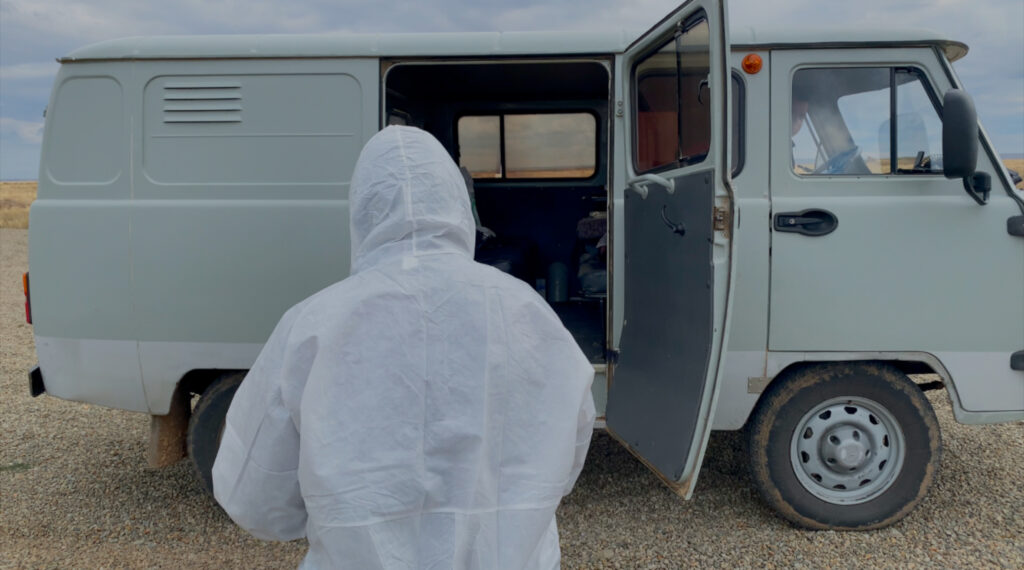
Years later, returning to Semey to film Jara became both a personal and political act of remembrance.
She cites Togzhan Kassenova’s Atomic Steppe and Ray Acheson’s Banning the Bomb, Smashing the Patriarchy as works that helped her articulate how nuclear policy and gender inequality are intertwined.
Shared Suffering, Shared Hope

In October, Seitenova travelled to Japan to participate in the 24th World Congress of the International Physicians for the Prevention of Nuclear War (IPPNW) in Nagasaki, meeting survivors of Hiroshima and Nagasaki.
“Japan and Kazakhstan share the experience of nuclear suffering,” she said. “But we can transform that pain into dialogue—and into peace.”
That spirit carried into the Tokyo screening, where diplomats, journalists and peace activists discussed nuclear justice, gender equality and youth participation.
Turning Pain into Power
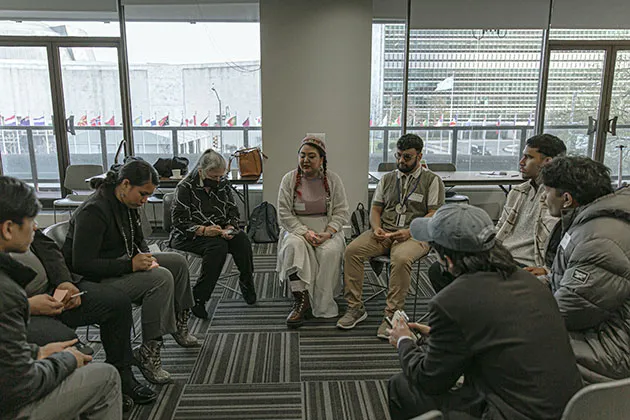
Through her organisation, the Kazakh Nuclear Frontline Coalition (ASQAQQNFC), Seitenova works to connect nuclear-affected communities with policymakers implementing the Treaty on the Prohibition of Nuclear Weapons (TPNW).
“The fight for nuclear justice is not about the past—it’s about the future,” she said. “It’s about ensuring that no one else has to live with the consequences of nuclear weapons.”
As the applause filled the Toda Peace Memorial Hall, the resonance was unmistakable—linking a hall named for a man who condemned the bomb to the wind-scarred plains of Semey, where the voices of women are at last being heard.
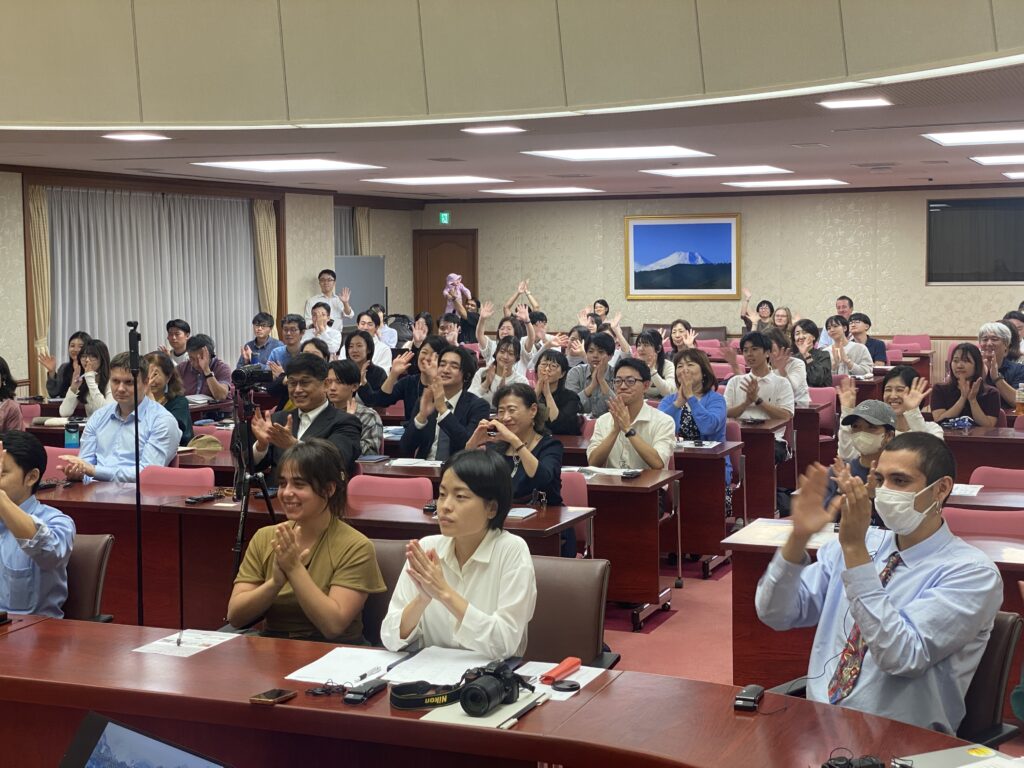
This article is brought to you by INPS Japan in collaboration with Soka Gakkai International, in consultative status with the UN’s Economic and Social Council (ECOSOC).
INPS Japan


